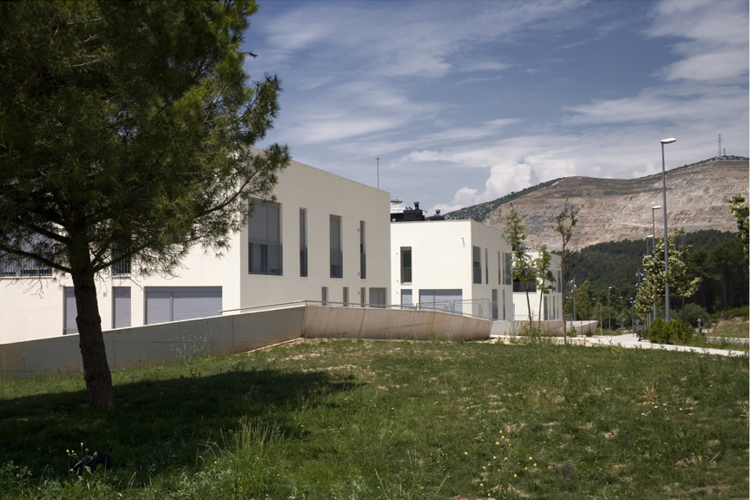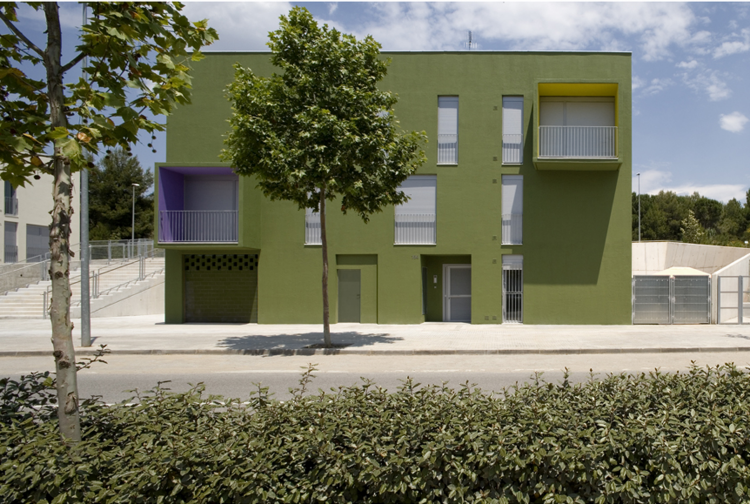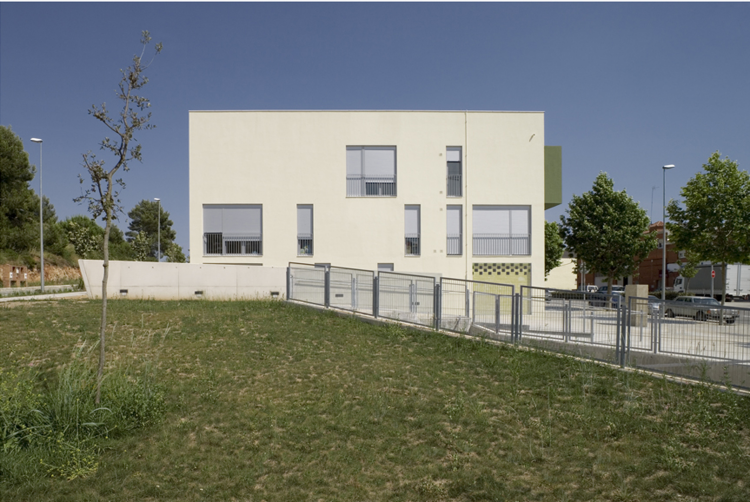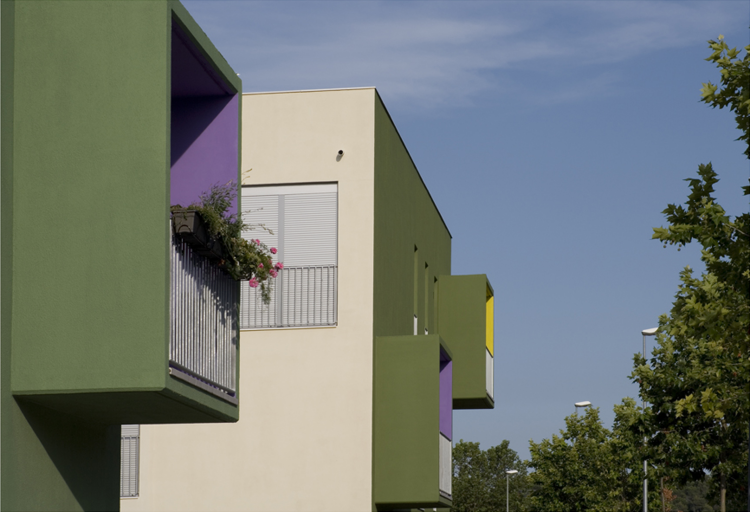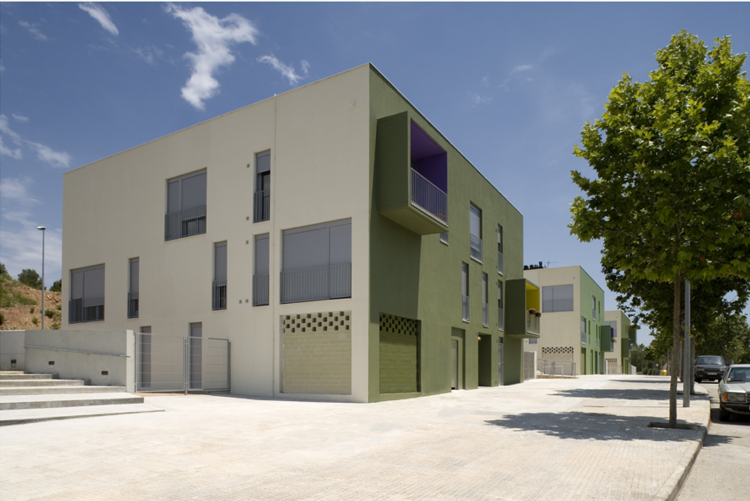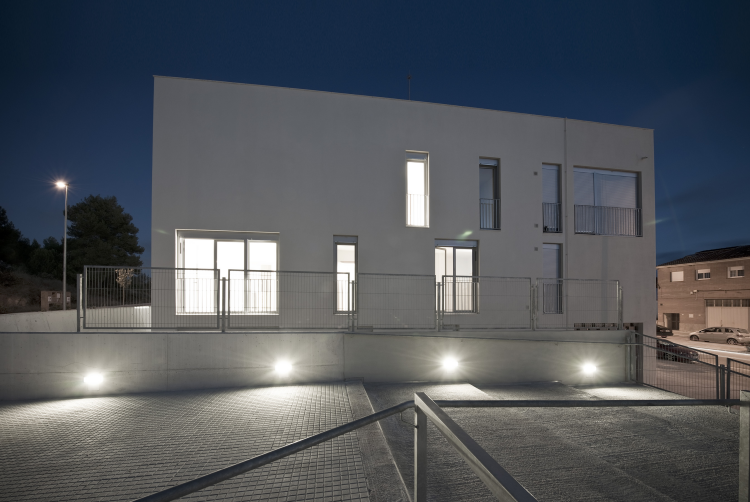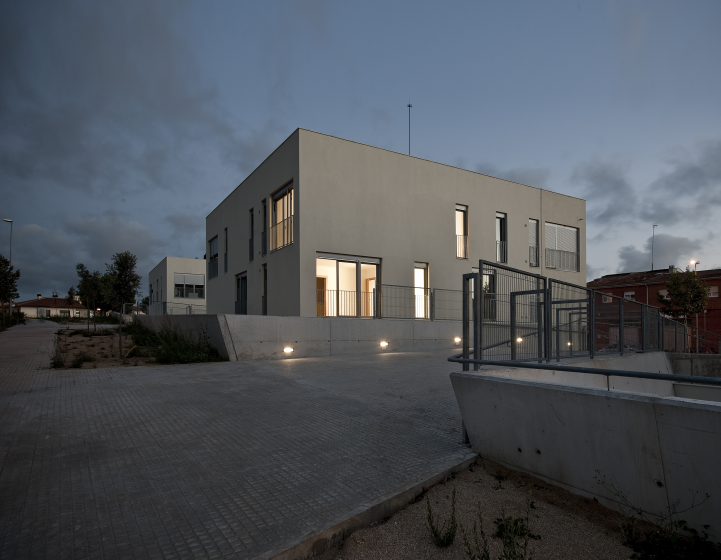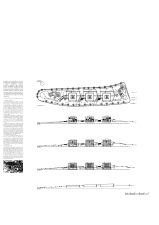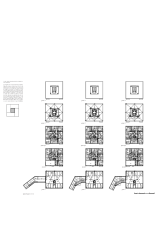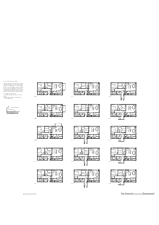33 Habitatges sector Pasqual Mas Begues
This is an intervention that, beyond meeting the demands of contemporary social housing -Compact, economic, sostenible- achieves involved in building sensitively place: a careful implementation where the complicity between the built and the free space emphasizes the quality of the environment-the Garraf Natural Park making it the main value to build both the urban boundary as the space community relationship. 1. A SENSITIVE IMPLEMENTATION TO PLACE Three buildings arranged: 1.1 Adaptation to the urban grain: Begues is a town located on the edge of the Garraf Natural Park whose grain is characterized by the sum of detached houses with gardens. To accommodate this small grain, the program of 33 houses and 3 commercial buildings is divided in 3, which ensures that the impact will be less than if it were a single block. Thus three towers bp + 2 17.5x17.5m plant and able to adapt naturally to the measurement location so that the proportion of built characterizing tissue and vacuum is maintained. 1.2 Integration into the urban fabric: The provision of 3 buildings generates open spaces between them linked to the urban fabric. These areas comprise the entire intervention to adjoining streets so that they become public squares that link the environment and other neighboring operations. 1.3 Topographic Adaptation: The fragmentation of the program in three parts is the starting point for addressing the slope of the plot. This strategy allows a more precise implantation and location of the ground floor of each building so that the excavation is minimized. A slightly sloping retaining walls as the natural slope of the land and the street configured patios, plazas and other open spaces, creating a development strongly linked to the site. 1.4 Identification with the environment In this topographical character of free space, we add a chromatic proposal which identifies the new intervention with the natural park becoming complicit in its natural beauty. Thus, the limestone facades color cubes assimilates the local stone. The three main facades, each of a different green, are abstracting the native trees, in the same way that the stands are the flowers. 1.5 Social Integration In a place where the protected public housing is scarce and abundant type of residences with private fenced garden, is especially relevant the openness of the whole. So, is committed to an intervention without perimeter fences, but rather, public open spaces with local -three noncommercial services. It's free economic zones and easy to maintain but of undoubted quality and high spatial experiential potential, fully open for the use and enjoyment of all citizens of Begues. 2. A COMPACT AND ECONOMIC TYPE OF BUILDING The tower is chosen from rooftops as the most compact type; ie the ratio provided by the housing surface / surface more effective public areas. At the same time, it is known that four homes per floor -for elevator is profitable and prevents torture plant to provide access to housing. On the other hand, households as autonomous units, compact ... like pieces of a puzzle think. Thus a swastika plant where housing rotate around the nucleus double orientation providing access to every house is built. The structure follows the same scheme, placing the pillars in the axes of rotation and releasing the homes of pillars which are configured as open spaces of great flexibility. 3. A TYPE OF HOUSING All homes are based on the same scheme; all homes are somewhat the same dwelling. The plant is divided into three longitudinal strips; namely, bedrooms and living room (strip 1), hallway (band 2) and toilets, multipurpose room and kitchen (strip 3). Corner room and kitchen in contact with the facade stands to vent directly. These three decisions are sufficient to organize the plant. Variations are given by: 1- irregular arrangement of the holes with different widths 2- 5 balconies building on Main Street 3- yards on the ground floor
Modalidad Public housing
Uso
Fecha de inicio de obra 2008-10-03
Fecha del certificado final de obra 2010-01-13
Dirección
Camí Ral 152-158
Begues
Barcelona (Spain)
- Marc Folch Hernández i Maria Pilar Calderón Martinez
- IMPSOL
- COPISA


